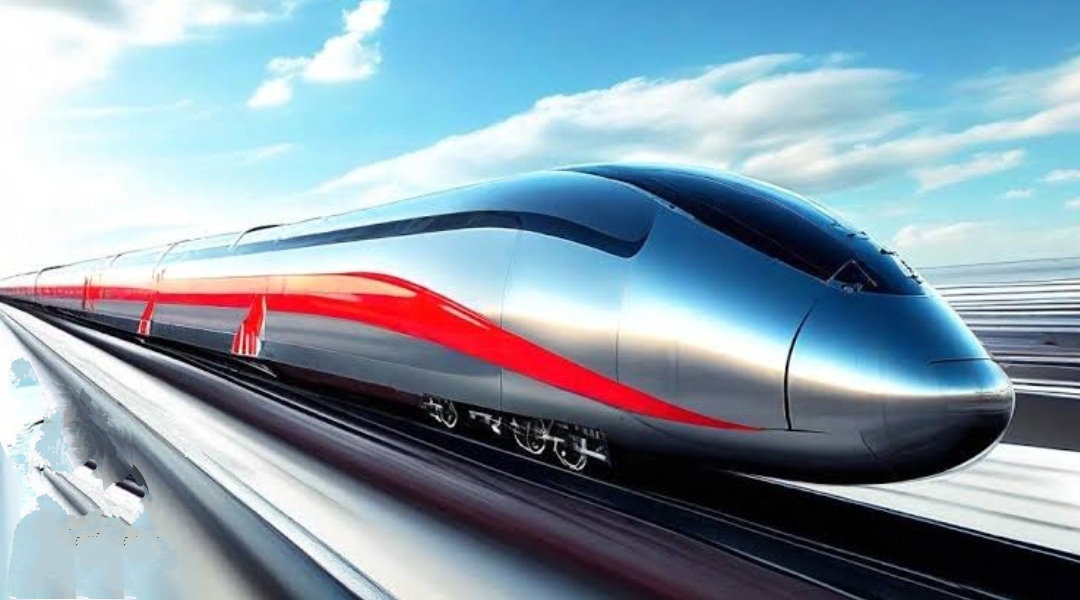Delhi Airport to Get India’s First Air Train by 2027: Connecting Terminals 1, 2, and 3
Delhi’s Indira Gandhi International Airport (IGIA) is not only one of the busiest airports in India but also a pivotal hub for international travel in the region. To enhance connectivity and streamline the passenger experience, the airport is set to introduce India’s first air train by 2027. This ambitious project aims to connect the three terminals—Terminal 1, Terminal 2, and Terminal 3—through an automated transit system. The air train will significantly reduce travel time between terminals, improve operational efficiency, and provide a seamless experience for passengers. This essay explores the significance of the air train project, its expected impact on the airport infrastructure, passenger experience, and the broader implications for air travel in India.

The Need for Enhanced Connectivity
Growing Passenger Traffic
As one of the fastest-growing aviation markets in the world, India has witnessed a remarkable increase in passenger traffic over the past decade. Delhi Airport has been a significant beneficiary of this trend, serving millions of travelers annually. The need for improved connectivity among the terminals has become critical to accommodate this growing influx of passengers.
Current Challenges
Currently, the journey between the three terminals at IGIA can be cumbersome, particularly for passengers with tight layover times. While there are shuttle buses available, they can be slow and unreliable, leading to missed connections and increased stress for travelers. The air train aims to address these challenges by providing a quick and efficient mode of transportation.
The Air Train Project: An Overview
Project Details
The air train will be an automated people mover system designed to transport passengers quickly and efficiently between Terminals 1, 2, and 3. The project is expected to be completed by 2027, with several phases planned to ensure minimal disruption to airport operations. The trains will run on an elevated track, providing an unobstructed view of the airport landscape.
Technological Aspects
The air train will utilize state-of-the-art technology to ensure safety, reliability, and efficiency. With automated systems for operations and management, the air train will be able to run continuously, reducing wait times for passengers. Furthermore, the system is designed to accommodate a high volume of travelers, reflecting the airport’s status as a major international hub.
Capacity and Speed
The air train is expected to operate at high speeds, reducing the travel time between terminals to just a few minutes. This swift connection will allow passengers to move quickly, enhancing the overall efficiency of the airport. The trains will have the capacity to accommodate a large number of passengers, making it suitable for peak travel times.
Enhancing Passenger Experience
Seamless Transfers
One of the primary goals of the air train project is to create a seamless transfer experience for passengers. With efficient connectivity between terminals, travelers will no longer have to worry about lengthy transit times. This is especially beneficial for international travelers who may need to switch terminals for connecting flights.
User-Friendly Design
The design of the air train and its stations will prioritize passenger convenience. Features such as easy access for individuals with reduced mobility, ample signage, and information systems will ensure that travelers can navigate the terminals with ease. Additionally, the air train is expected to be integrated with the airport’s overall layout, allowing for straightforward transitions between airside and landside facilities.
Real-Time Updates
Passengers will benefit from real-time updates regarding train schedules, delays, and other relevant information through digital displays and mobile applications. This integration of technology will enhance the travel experience, allowing passengers to plan their journeys more effectively.
Impact on Airport Operations
Increased Efficiency
By introducing the air train, IGIA will enhance its operational efficiency. The rapid movement of passengers between terminals will reduce congestion at terminal gates and security checkpoints, allowing airport staff to manage the flow of passengers more effectively. This efficiency is crucial for maintaining on-time departures and arrivals, which is a significant concern for airlines and passengers alike.
Better Resource Allocation
With improved connectivity, airport management can allocate resources more effectively. Staff can be deployed strategically to manage high-traffic areas, ensuring that passengers receive prompt assistance when needed. This flexibility is particularly important during peak travel seasons, such as holidays and major festivals.
Environmental Considerations
The air train will also promote sustainability by reducing the carbon footprint associated with traditional shuttle buses. As a more efficient mode of transportation, the air train aligns with global trends toward greener airport operations. Furthermore, the elevated design will minimize land use and environmental impact, preserving green spaces around the airport.
Economic Implications
Boosting Local Economy
The construction and operation of the air train will create job opportunities, contributing to the local economy. From construction jobs during the building phase to operational roles once the air train is in service, this project will provide employment opportunities for many.
Attracting More Airlines
Improved connectivity can attract more airlines to operate at IGIA, potentially increasing competition and lowering airfares for consumers. The ability to transfer quickly between terminals will make the airport more appealing to both international and domestic carriers, fostering growth in the aviation sector.
Enhanced Tourism
As a key entry point to India, an efficient airport experience can significantly impact tourism. With the air train facilitating smoother transitions for international visitors, the overall impression of Delhi as a travel destination can improve. Enhanced airport experiences are vital for encouraging repeat visits and recommendations from travelers.
Challenges and Considerations
Infrastructure Constraints
While the air train project promises many benefits, there are challenges associated with its construction. Integrating the air train into the existing airport infrastructure will require careful planning and execution to minimize disruptions to ongoing operations.
Financial Investment
The project will necessitate substantial financial investment, not only for construction but also for ongoing maintenance and operation. Ensuring the project remains within budget and is financially viable will be crucial for its success.
Public Perception and Acceptance
Another important factor will be the public’s perception of the air train. Effective communication about the project’s benefits, timeline, and operational details will be essential for gaining public acceptance. Transparency regarding construction impacts and efforts to mitigate disruption will also play a key role in maintaining public trust.


[…] Read this also : Delhi Airport to Get India’s First Air Train by 2027. […]
[…] Read this post also : Delhi Airport to Get India’s First Air Train by 2027. […]